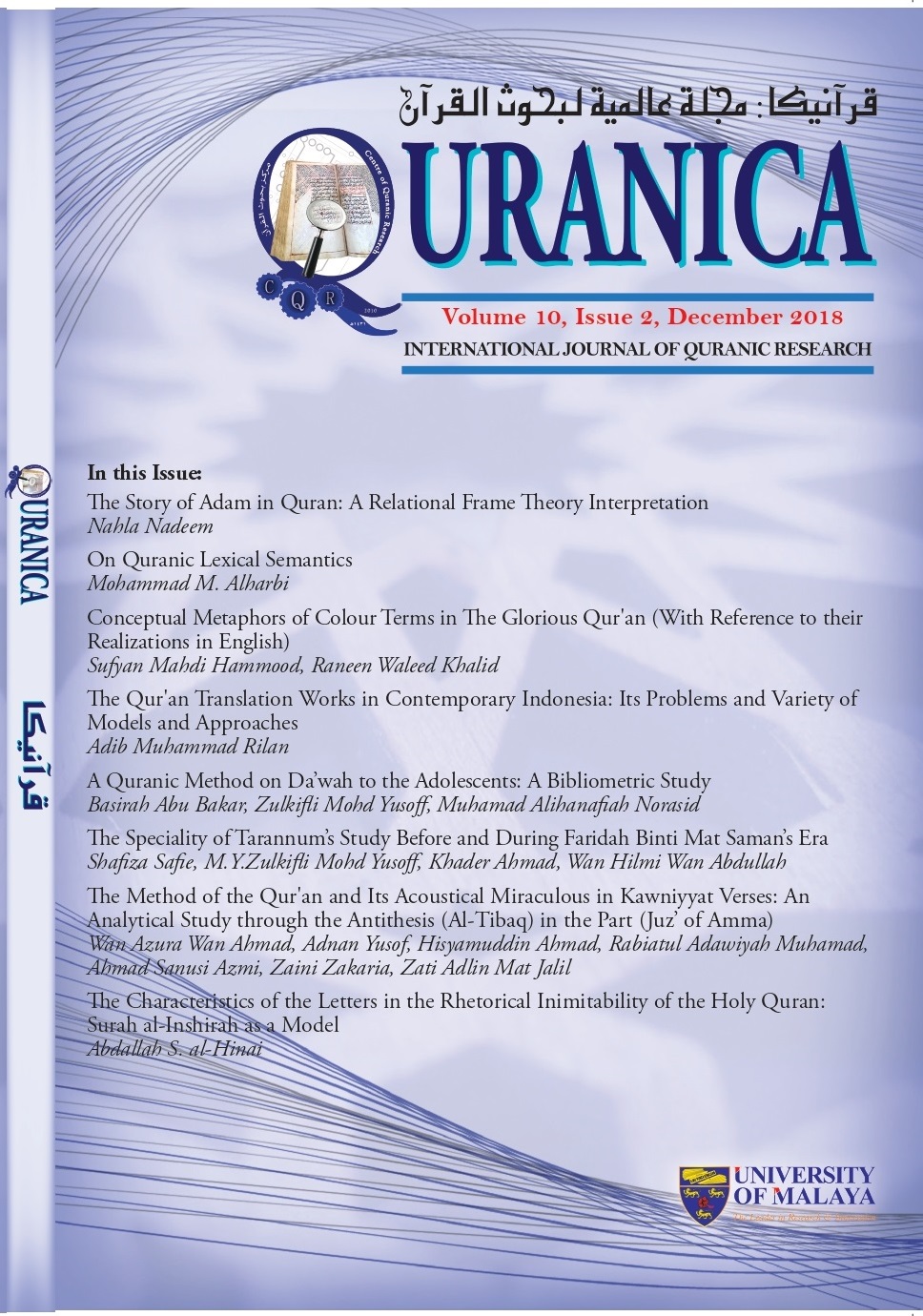Conceptual Metaphors of Colour Terms in The Glorious Qur'an (With Reference to their Realizations in English)
Main Article Content
Abstract
This study sets out to investigate the conceptual metaphors of colour terms in The Glorious Qur’an as part of our experience from a cognitive-semantic perspective. Conceptual metaphors of colour are used to structure and understand the abstract concepts in terms of more clear and delineated ones. They perform an important function when they are used in The Glorious Qur'an, in that, it is characterized by its uniqueness, style and its aesthetic and rhetoric structures. Conceptual metaphors play an essential role in opening new horizons for readers to understand the deepest meanings of the Qura'nic Ayas which are used metaphorically in order to give a specific significance whether intellectual, psychological or aesthetic. It is hypothesized that conceptual metaphors of colour are commonly used in The Glorious Qur'an to facilitate the understanding of abstract concepts in terms of concrete ones. The use of conceptual metaphors in The Glorious Qur'an is meant to meet specific rhetorical meanings. To carry out the present study, eight Ayas from The Glorious Qur'an with two different translations are chosen to be analyzed in order to check to what extent the translations give equivalent translations to conceptual metaphors. Ali (1987) and Al-Hilali and Khan (1996) translations are adopted in this study. Conclusions of this study are:1) conceptual metaphors of colour have a decisive role in determining the precise meaning of the Quranic texts and 2) among the semantic significances employed by these metaphors, intellectual significances are used abundantly.
Downloads
Article Details
Disclaimer
QURANICA makes every effort to ensure the accuracy of all its contents. However, opinions, discussions, views and recommendations are expressed in this journal do not necessarily reflect the official policy of QURANICA or views of its editors or publishers. Therefore, QURANICA and its publishers will not be liable for any controversy may be arisen. The journal reserves the right, at its sole discretion, to change its terms and conditions of publications.
Copyright
It is a condition of publication that manuscript submitted to the journal have not been published, accepted for publication, nor simultaneously submitted for publication elsewhere. By submitting a manuscript, the author(s) agrees that copyright for the article is transferred to the publisher, if and when the manuscript is accepted for publication.
